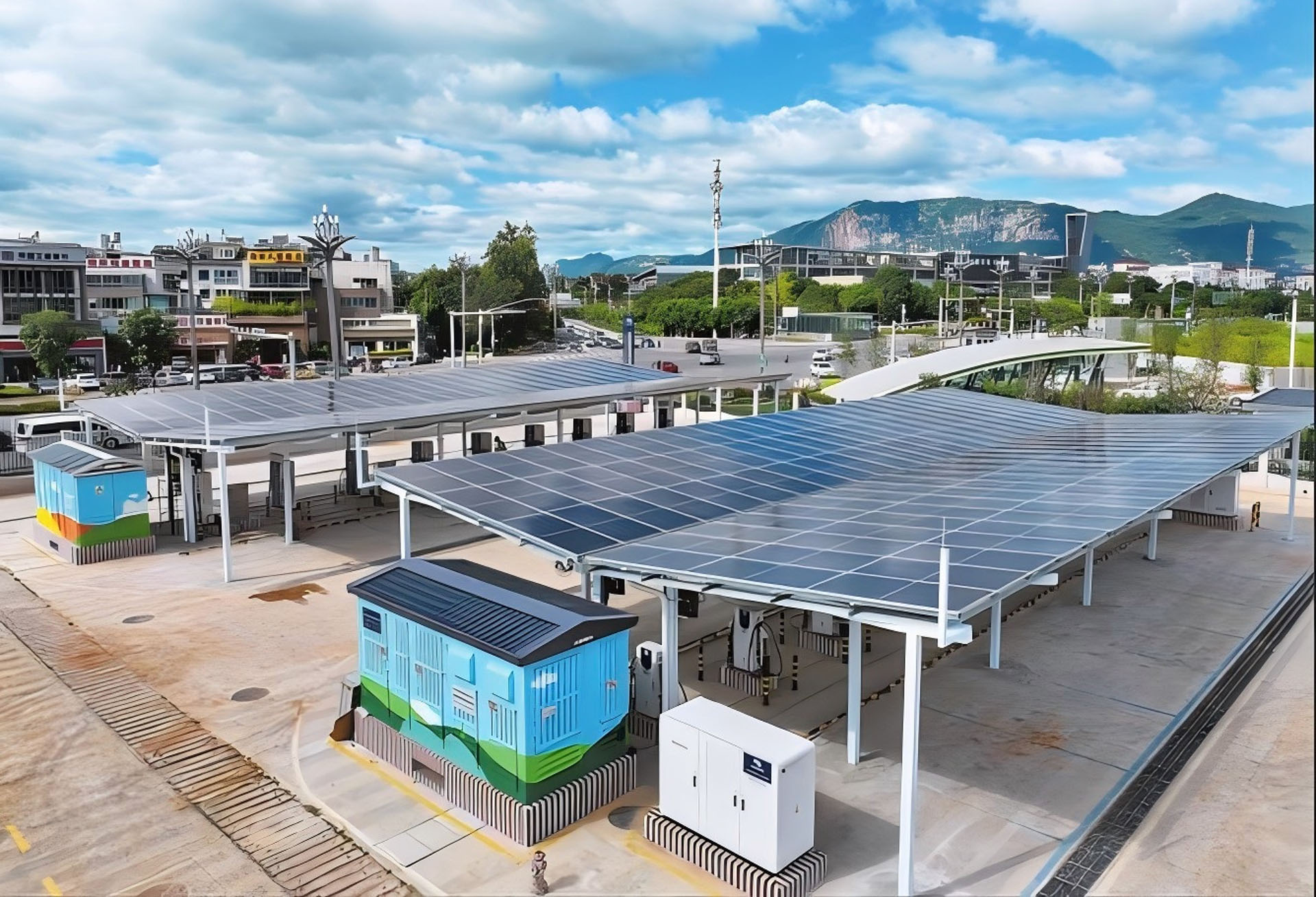Are you struggling to see how highway charging stations, especially those with solar power and battery storage, can actually make money? It’s a common concern, given the high upfront costs and complex technology involved.
Highway photovoltaic (PV) storage charging stations achieve profitability through a combination of charging fees, grid service revenues, government incentives, and ancillary income streams like advertising and retail, all while optimizing costs through smart design and operation.
But it’s not as simple as just slapping some solar panels on a roof and plugging in chargers. Let’s dive into the specifics of making these stations a financial success, drawing from my experience in the EV charging industry in China.
What is the Difference Between Integrated Photovoltaic Energy Storage Charging Stations on Highways and Ordinary Charging Stations?
Do you ever wonder what really sets a highway charging station with solar panels and batteries apart from the standard ones? The answer is crucial for understanding their profitability.
The key difference lies in energy sourcing and management. Ordinary charging stations rely solely on the grid, while integrated stations generate their own power (solar), store it (batteries), and interact with the grid strategically, leading to significant cost savings and revenue opportunities.
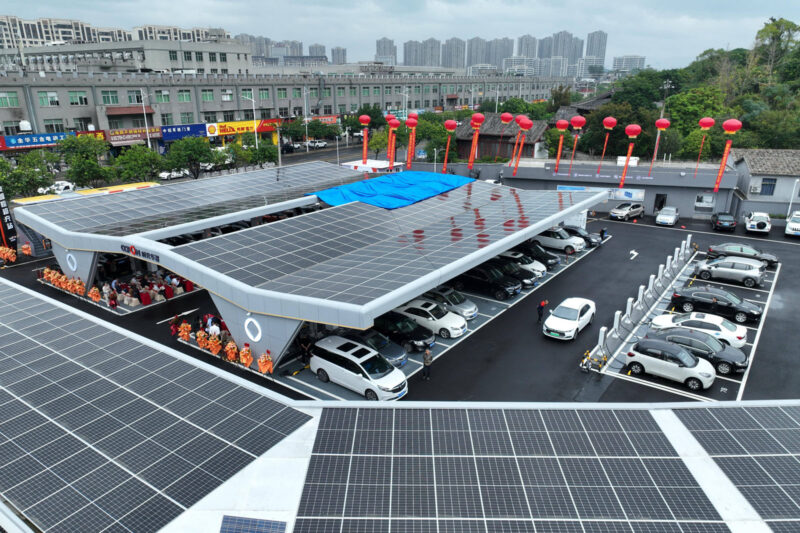
Key Distinctions
| Feature | Ordinary Charging Station | Integrated PV Storage Station |
| Energy Source | Exclusively grid power | Solar PV + battery storage + grid connection |
| Cost Structure | Electricity cost based on usage/time | Reduced grid dependence, potential for net metering |
| Grid Interaction | One-way (consumption) | Two-way (consumption and grid services) |
| Resilience | Vulnerable to grid outages | Can operate during grid outages (island mode) |
| Sustainability | Dependent on grid’s energy mix | Lower carbon footprint due to solar generation |
Essentially, ordinary stations are consumers of electricity, while integrated stations are prosumers (producers and consumers). This ability to generate, store, and sell power back to the grid fundamentally changes the economic model. At Tanxun, we’ve seen firsthand how this shift can unlock significant cost savings and new revenue streams for our clients.
What are the Initial Investments in Building Integrated Photovoltaic Energy Storage Charging Stations on Highways?
Is the high upfront cost of building these advanced charging stations holding you back? It’s a valid concern, as it is significantly more than a standard station.
Initial investments include land acquisition/lease, solar panels, battery energy storage systems (BESS), charging equipment (DC fast chargers), grid connection costs, power conversion systems (PCS), and construction/installation labor.
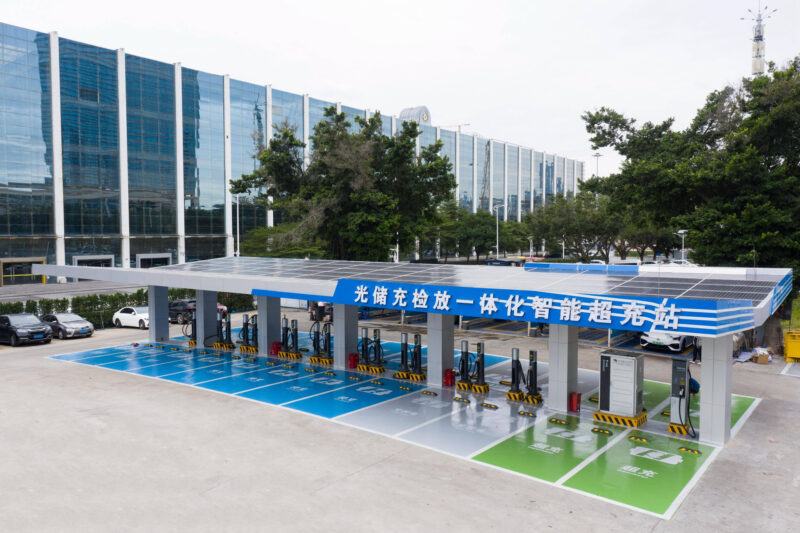
Cost Breakdown
The total cost can vary widely depending on location, size, and technology choices. Here’s a simplified breakdown:
- Land: Securing suitable land near highway exits is critical, but costs vary widely by region. Partnering with existing rest areas can reduce this.
- Solar PV System: The size of the solar array depends on energy needs and local solar irradiance.
- Battery Energy Storage System (BESS): Capacity is determined by factors like desired grid services participation and backup power needs. Using second-life EV batteries can significantly cut BESS costs.
- Charging Equipment: DC fast chargers are significantly more expensive than Level 2 chargers, but essential for highway applications.
- Grid Connection: Costs can be substantial, especially if significant upgrades to grid infrastructure are needed.
- Power Conversion System (PCS): This crucial component manages the flow of energy between the solar array, battery, chargers, and grid.
- Soft Costs: Permitting, engineering, and project management add to the total.
Remember, government incentives (tax credits, grants, rebates) can significantly offset these initial costs. In China, and globally, we’re seeing strong government support for EV infrastructure, making these projects more financially feasible.
What are the Operating Costs of Integrated Photovoltaic Energy Storage Charging Stations on Highways?
Are ongoing expenses eating into your potential profits? Understanding and managing these costs is key to long-term viability.
Operating costs include electricity purchased from the grid (when solar isn’t sufficient), maintenance of the solar array, BESS, and charging equipment, software subscriptions for smart charging and grid services, and potentially land lease payments.
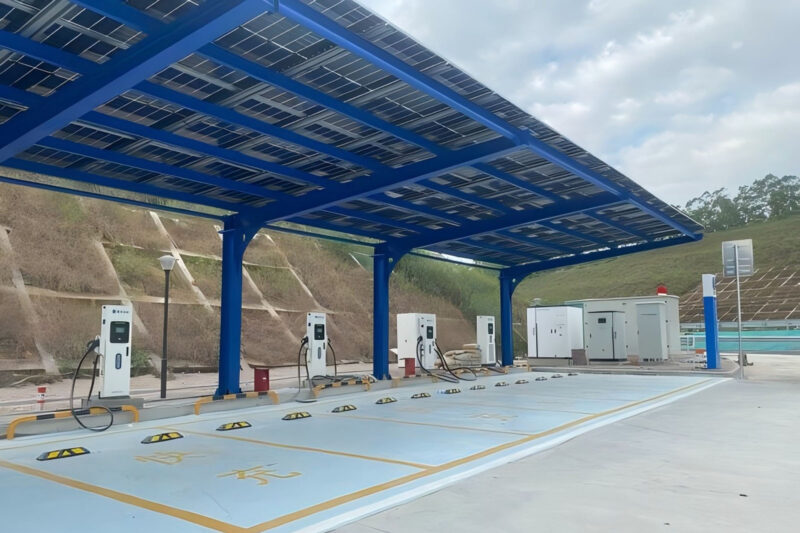
Minimizing Operating Costs
- Electricity Costs: Solar generation and battery storage significantly reduce reliance on grid power, especially during peak demand periods when prices are highest.
- Maintenance: Regular maintenance is essential, but costs can be minimized through predictive maintenance and using high-quality equipment. Solar panels have long lifespans (25+ years), reducing long-term replacement costs.
- Software/Subscriptions: Smart charging software and participation in grid service programs require ongoing subscriptions, but these costs are typically offset by revenue generated.
- Insurance and Property Taxes: If you own the land, these are recurring expenses.
A key strategy is using an Energy Management System (EMS). An EMS coordinates all the components to optimize energy flows, minimizing costs and maximizing revenue. Our experience at Tanxun has shown that a well-implemented EMS is critical for profitability.
What are the Revenue Sources of Integrated Photovoltaic Energy Storage Charging Stations on Highways, Beyond Just Charging Fees?
Are you only thinking about charging fees as your income? Think bigger! Integrated stations have multiple potential revenue streams.
Beyond charging fees, revenue can be generated through grid services (frequency regulation, demand response), feed-in tariffs or net metering (selling excess solar to the grid), advertising, sponsorships, and on-site retail/amenities.
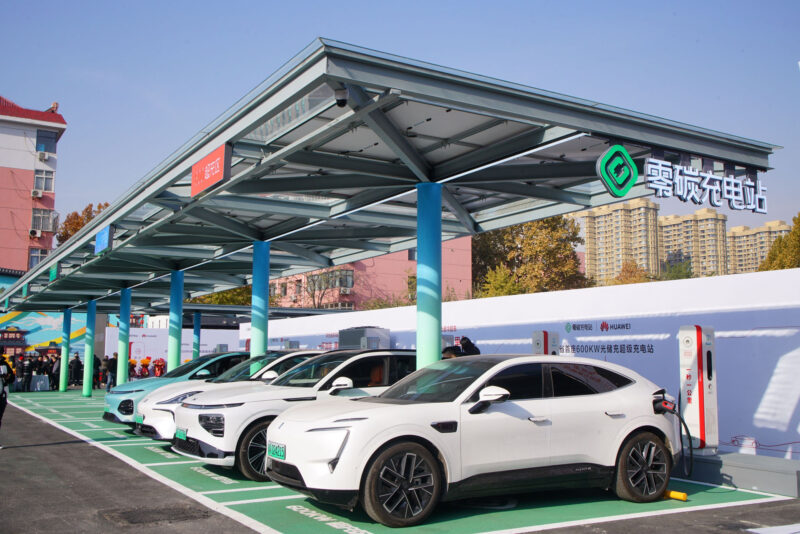
Diversifying Revenue
- Charging Fees: Implement dynamic pricing (higher prices during peak hours) to maximize revenue and manage grid load. Offer membership/subscription options for frequent users.
- Grid Services: Battery storage allows participation in lucrative grid services. Frequency regulation and demand response can provide significant income.
- Feed-in Tariffs/Net Metering: If regulations allow, selling excess solar generation back to the grid can be a consistent revenue source.
- Advertising and Sponsorships: Digital signage and station sponsorships offer opportunities to target a captive audience of EV drivers.
- Retail and Amenities: Integrating a convenience store or quick-service restaurant (QSR), similar to the traditional gas station model, can significantly boost revenue. Think coffee, snacks, and Wi-Fi while drivers wait.
This multi-faceted revenue approach is key. It’s about creating a “destination” for EV drivers, not just a charging point. My advice? Don’t underestimate the power of the “gas station model” – capture customer dwell time and offer additional services.
How can V2G Technology Generate Additional Revenue for Integrated Photovoltaic Energy Storage Charging Stations on Highways?
Are you missing out on the potential of Vehicle-to-Grid (V2G) technology? It’s a game-changer for charging station revenue.
V2G technology allows EVs to not only draw power from the grid but also send power back to it. This enables charging stations to participate in grid services at a larger scale, earning revenue by providing grid stability and balancing services, essentially turning parked EVs into a distributed energy resource.
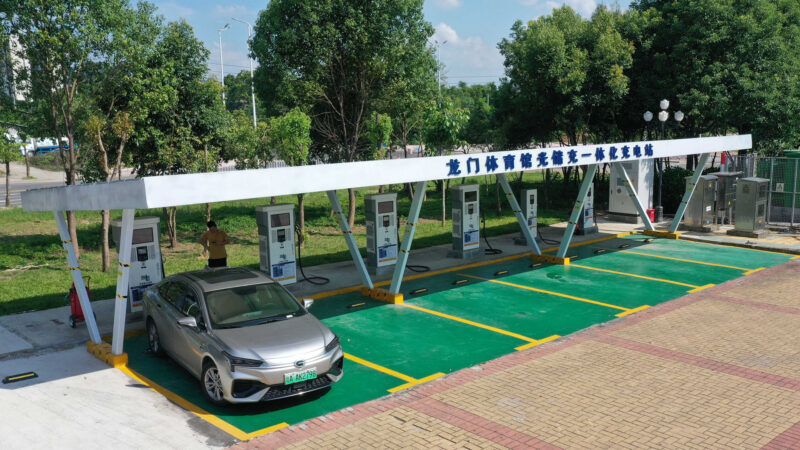
V2G in Action
- Enhanced Grid Services: V2G significantly expands the capacity for providing grid services. More energy storage capacity means more revenue from frequency regulation, peak shaving, and demand response.
- Increased Flexibility: V2G adds flexibility to the charging station’s energy management. It can draw power from EVs when needed (with driver consent, of course) and send power back when it’s advantageous.
- New Revenue Models: V2G opens up possibilities for new revenue-sharing models with EV owners. Drivers could be compensated for allowing their vehicles to participate in grid services.
While V2G is still in its early stages of deployment, it holds immense potential. At Tanxun, we’re actively exploring V2G technology and its integration into our charging solutions, as we see it becoming increasingly important in the future.
How to Choose Suitable Equipment Suppliers for Integrated Photovoltaic Energy Storage Charging Stations on Highways?
Are you overwhelmed by the choice of equipment suppliers? Picking the right partners is critical for success.
Choose suppliers with a proven track record, high-quality equipment (solar panels, batteries, chargers, PCS), strong technical support, and experience in grid-connected systems, and that provide customized solutions. Consider suppliers that offer comprehensive warranties and maintenance services.
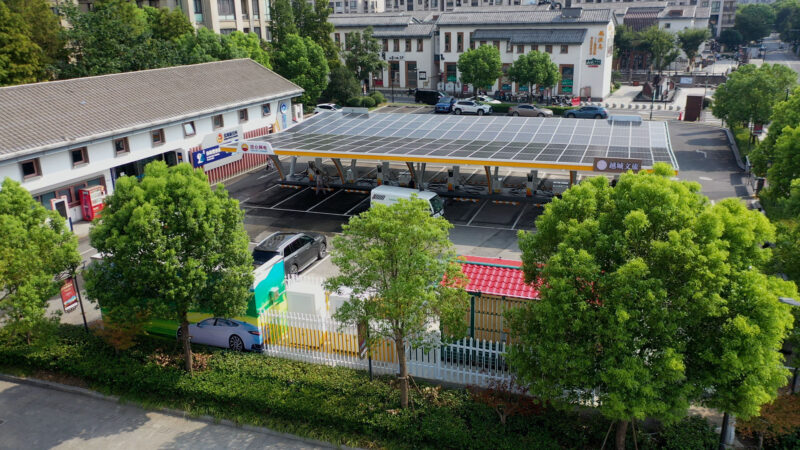
Supplier Selection Criteria
- Reputation and Experience: Look for established companies with a history of successful projects, especially in the highway charging sector.
- Product Quality and Reliability: Opt for high-quality components that can withstand harsh outdoor conditions and heavy use.
- Technical Support and Maintenance: Ensure the supplier offers comprehensive technical support and readily available maintenance services to minimize downtime.
- Certifications and Compliance: Verify that the equipment meets all relevant safety and grid interconnection standards (e.g., UL, CE, IEC).
- Customization Options: The ability to tailor the system to your specific needs (power levels, battery capacity, software features) is crucial.
- Financial Stability: Choose a financially stable supplier to ensure long-term support and warranty coverage.
- Cost-Effectiveness: Get your product at a good price.
As a manufacturer ourselves (Tanxun), we understand the importance of these factors. We provide OEM/ODM services, allowing us to tailor our charging solutions to the specific needs of our clients, including highway charging operators.
How to Improve the Utilization Rate of Integrated Photovoltaic Energy Storage Charging Stations on Highways Through Refined Operation?
Is low utilization eating into your profits? Smart operation is key to maximizing your investment.
Improve utilization through strategic pricing, marketing and promotion to EV drivers, providing excellent customer service, ensuring high reliability and uptime, and offering amenities that attract drivers and increase dwell time.
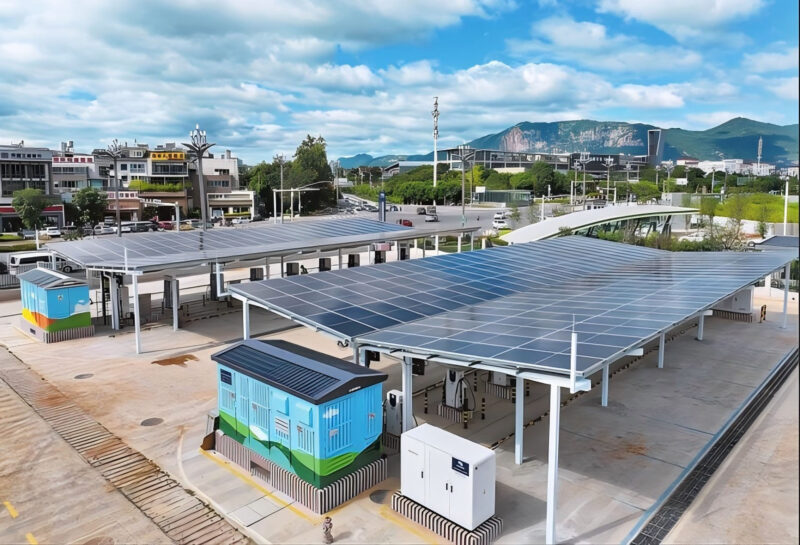
Maximizing Usage
- Strategic Location: Easy access from highway exits and high visibility are crucial.
- Dynamic Pricing: Offer competitive pricing, potentially with lower rates during off-peak hours to encourage usage.
- Marketing and Promotion: Use online platforms (charging station locators, EV forums) and partnerships with EV manufacturers to reach potential customers.
- Customer Service: Provide a clean, safe, and comfortable waiting area with amenities like Wi-Fi, restrooms, and potentially food/beverage options.
- Reliability and Uptime: Minimize downtime through proactive maintenance and rapid response to any issues.
- Data Analysis: Track charging patterns, energy usage, and customer feedback to continuously optimize operations and pricing.
- Membership Programs: Offer discounts or other perks to frequent users to build loyalty.
Remember, a charging station is not just a utility; it’s a service. Providing a positive customer experience is essential for attracting and retaining users.
Future Trends: What Development Opportunities are there for Integrated Photovoltaic Energy Storage Charging Stations on Highways?
Are you wondering what the future holds for these stations? Staying ahead of the curve is key to long-term success.
Future trends include increased adoption of V2G technology, higher power charging (ultra-fast charging), integration with smart grids and renewable energy sources, and the development of more sophisticated energy management systems (EMS) using AI and machine learning.

Looking Ahead
- Ultra-Fast Charging: Drivers will increasingly demand faster charging speeds. Stations will need to accommodate higher power levels (350kW and beyond).
- Wireless Charging: While still emerging, wireless charging technology could eventually become a factor in highway charging.
- Smart Grid Integration: Deeper integration with smart grids will enable more sophisticated energy management and grid services participation.
- Renewable Energy Expansion: As renewable energy becomes more prevalent, stations will increasingly rely on on-site solar and potentially wind power.
- Autonomous Vehicles: The rise of autonomous vehicles will present new challenges and opportunities for charging infrastructure.
- Data Analytics and AI: Advanced data analytics and AI will play a larger role in optimizing charging operations, predicting demand, and personalizing the customer experience.
- Cybersecurity: As charging stations become more connected, cybersecurity will be paramount.
The industry is evolving rapidly. At Tanxun, we are continuously investing in R&D to stay at the forefront of these trends and provide our clients with cutting-edge charging solutions.
Conclusion
Photovoltaic storage charging stations on highways can be profitable, but it requires a holistic approach. By combining diverse revenue streams, optimizing costs, leveraging technology, and focusing on the customer experience, these stations can become valuable assets in the growing EV ecosystem. It’s not just about selling electricity; it’s about providing a comprehensive service and becoming an integral part of the EV journey.

